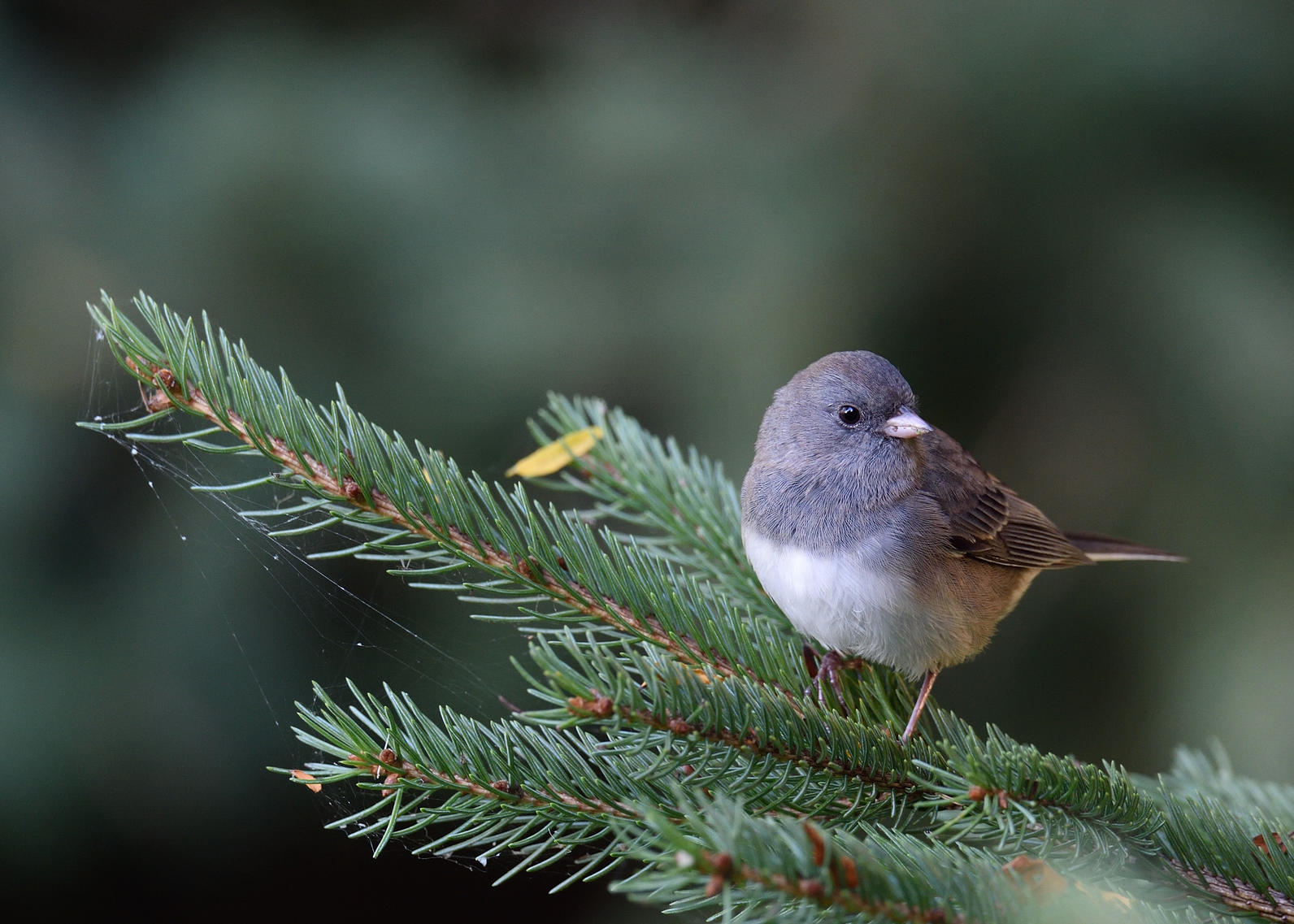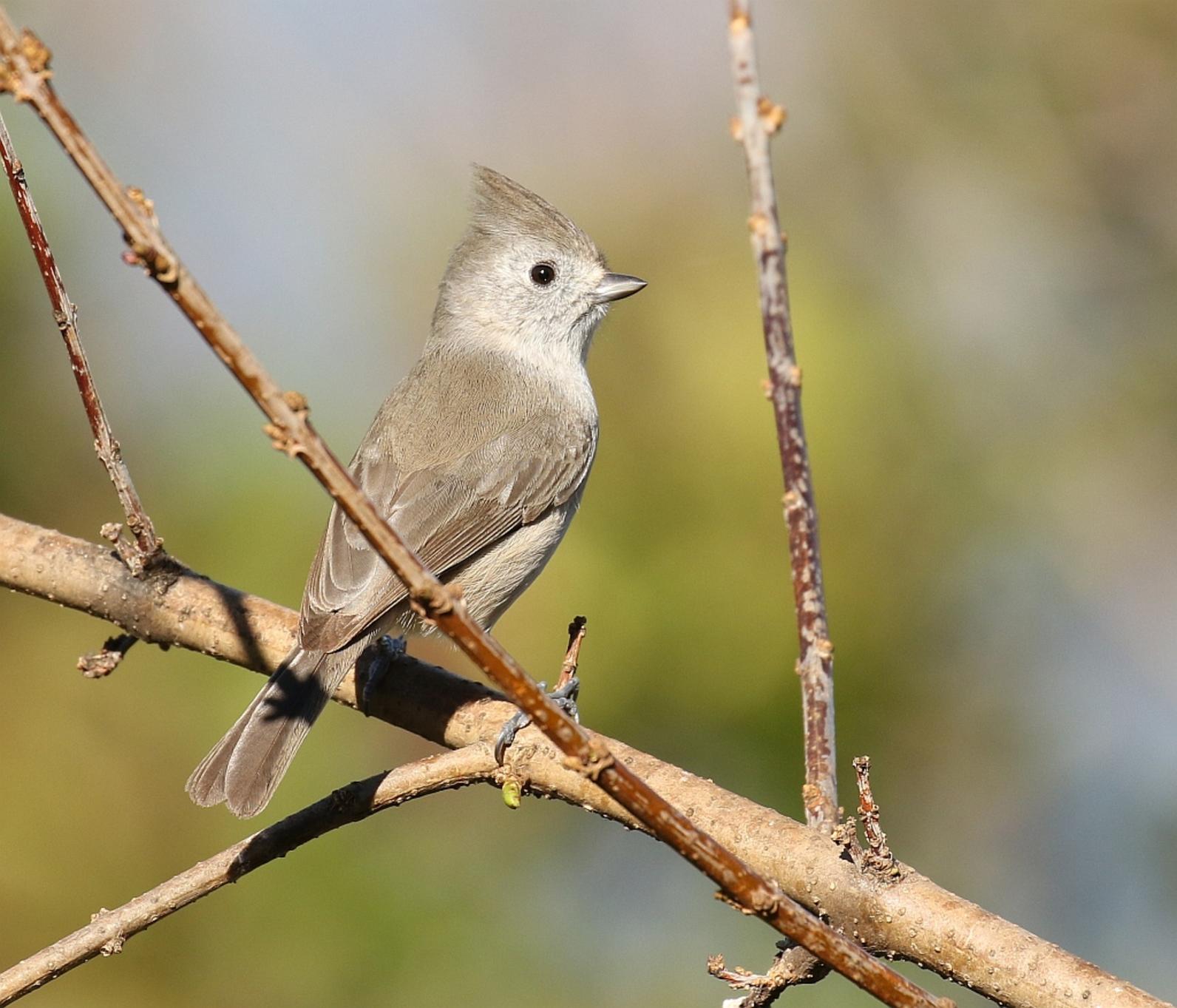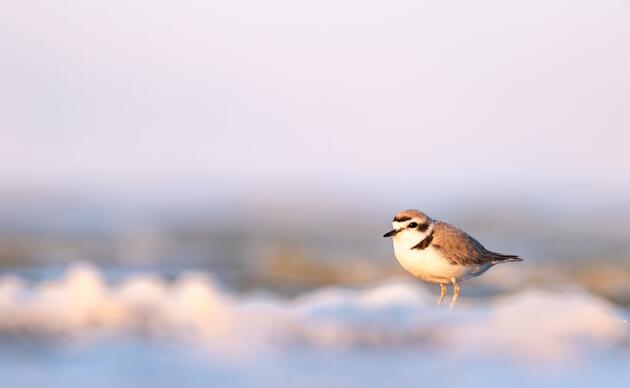With spring underway in California, the change in seasons brings a peak in bird diversity throughout the state. Many resident birds have already begun nesting and raising young. Species that spent winter here are staging their moves to breeding grounds further north or higher in the mountains. Meanwhile, long-distance migrants have started trickling through from warmer and tropical locales.
As a major stop along the Pacific Flyway, up to a billion birds of hundreds of species will pass through the Golden State during spring migration. California hosts a variety of key habitats for these migrants, some of which can be found in your backyards and neighborhoods.
Between these determined migrants, lingering winter residents, and year-round breeders, there is a tremendous variety of birds for Californians to enjoy right from their doorsteps in the spring. Here are a few highlighted species:
1) Dark-eyed Junco

One of the most abundant songbirds in North America—recent studies estimate up to 630 million individuals—Dark-eyed Juncos are known as "snowbirds" for their habit of appearing across much of the United States in the winter when temperatures start dropping, after spending their summers breeding in northern forests and mountain ranges.
In most of southern and central California, Dark-eyed Juncos are only present in the winter, but elsewhere in the state, they can be found year-round in coniferous coastal and mountain habitats. Birders often see juncos feeding on the ground, making ticking calls and flashing their white outer tail feathers as they fly into shrub cover. Dark-eyed Juncos consist of several distinct subspecies that vary geographically.
Most common in California is the "Oregon Junco" variety, identified by their black or dark gray hood contrasting with their warm brown back and pinkish sides. However, other subspecies can sometimes be found in wintertime flocks, which can comprise of up to several dozen individuals.
2) Allen's Hummingbird

The bright flashes and buzzing sounds of this copper and green gem are a sign of early spring in the coastal regions of California. Most Allen's Hummingbirds spend the winter in Mexico but will arrive in shrubby habitats as early as January, when winter rains yield an abundance of flowers, though a small population resides in parts of Southern California year-round.
Males put on an elaborate show while courting females: they will flash their brilliant reddish orange throat, then swoop in wide pendulous arcs before rising high and diving in a steep J-shaped curve while their tails produce a metallic whine.
By March and April nesting is well under way, and during a prolonged breeding season females can raise as many as five broods. Like most hummingbirds, they are drawn to sugar water feeders and backyard flowers, especially in migration.
3) California Towhee

California Towhees live up to their name: save for a few pockets in southwest Oregon and the Baja Peninsula, these plain brown birds are found only in California. Widespread throughout many brushy habitats in the state and relatively tolerant of rural development and urbanization, California Towhees are equally at home in city parks and gardens as they are in wild chaparral hillsides.
Though they prefer to forage in open ground, they often hide in dense vegetation, where observers can listen for their metallic 'tink' callnotes or the squealing duets of mated pairs. California Towhees do not migrate and are instead one of the most sedentary birds in the state, rarely moving even short distances from their nesting areas. Males will aggressively defend their territories in the spring and summer to the point of even challenging their own reflection in windows or car mirrors!
4) Oak Titmouse

Other than the small crest on their heads, these small, plain gray birds may be seem nondescript, yet Oak Titmice do not lack heart. Almost entirely restricted to the dryer slopes of California, they are closely tied to oak woodlands, where you can listen for their rapid, chattering calls as they flit energetically through the canopy in pairs or small family groups searching for insects to eat.
The male's peter-peter-peter song can be heard throughout the year, but increases in frequency during the spring. Oak Titmice mate for life and will defend territories throughout the year. They are nearly identical in appearance with the Juniper Titmouse of the Great Basin, with which it was formerly considered the same species, called the Plain Titmouse.
Oak Titmice usually nest and roost in natural cavities, which are selected by the female, but they also regularly use nest boxes. They are also drawn to feeders offering suet or seeds.
5) Cedar Waxwing

This gregarious, fruit-loving bird can be detected by their thin, lisping calls as they descend in large flocks to gorge themselves on berry-laden trees and shrubs. One of the more nomadic songbirds, Cedar Waxwings will move about irregularly in search of locally-abundant fruit crops, and both their breeding and wintering territories may change year to year depending on food availability. In California they are generally seen most often in the winter, and will be drawn to backyards offering fruit-producing native plants, such as toyon, dogwood, and coffeeberry.
Cedar Waxwings are one the few birds that can survive on fruit alone for several months, and are known to occasionally become intoxicated from eating too many overripe berries that have begun fermentation! In the summertime, waxwings will also eat insects, which they catch acrobatically on the wing.
Among the waxwing's unique physical characteristics are the red, waxlike droplets on their inner wing feathers. The exact function of these waxy tips are not known, but scientists believe they may help attract mates.
6) California Scrub-Jay

This long-tailed, lanky "blue jay" is a common year-round resident in oak woodlands, dry shrublands, parks and neighborhoods in the coastal regions and foothills of California. The species is a regular visitor to bird feeders, and casual observers may enjoy watching Scrub-Jays for their assertive, inquisitive, and vocal behavior.
California Scrub-Jays are adept and opportunistic foragers. In the summer, but especially during the fall and winter, their diet consists mostly of insects and fruits. Their diet also includes seeds and nuts, particularly acorns.
Scrub-Jays will often cache food in the ground for later consumption, a habit that has made them a popular subject in research of cognitive ability and spatial memory—one study has found that a single individual can store up to 5,000 acorns in one autumn! Scrub-jays are also known to eat small vertebrates and even bird eggs and nestlings, sometimes stalking adult birds to find their nests.
7) Cooper's Hawk

Of the three bird-hunting Accipiter hawks, the Cooper's Hawk is the mid-sized species and the most common in California, breeding in woodlands throughout the state, as well as in forested suburbs with increasing frequency in recent decades.
Despite its wide distribution, Cooper's Hawks are relatively secretive, and are most likely to be seen briefly prowling above the edge of a forest or field. With their long tail and powerful, rounded wings, Cooper's Hawks are adept at pursuing prey through dense tree canopies at high speed. They will also periodically exploit backyard feeders for hunting––astute observers may notice alarm calls spreading among backyard birds preceding a Cooper's arrival.
Though they mainly favor medium-sized birds—including robins, doves, and starlings—as their prey, Cooper's Hawks also supplement their diet with small mammals. Females are about 30% larger than males, making for one of the most pronounced sex-based size differences of any hawk, and because of this discrepancy, females tend to eat larger prey than males.
Cooper's Hawks are notoriously tricky to distinguish from their smaller cousin, the Sharp-shinned Hawk, which is largely only a wintertime resident in California.
8) Yellow-rumped Warbler

Affectionately called "butter-butts" for the very feature they're named for—a distinct yellow patch on their rumps—these birds are perhaps the hardiest and most widespread warblers in North America. Yellow-rumped Warblers are a very common wintering bird throughout much of California, frequently visiting trees and shrubs in small flocks.
Unlike most insect-eating warblers, Yellow-rumped Warblers can digest the waxy coating of berries, so their diet also includes berries—a dietary preference allowing the species to winter farther north than other warblers.
By April, most will depart for their breeding grounds, which include coniferous forests in California's mountain ranges. There are two distinct subspecies of Yellow-rumped Warblers which used to be considered separate species: the yellow-throated "Audubon's" warbler of the western North America, and the white-throated eastern "Myrtle" warbler.
9) Chestnut-backed Chickadee

Chestnut-backed Chickadees are a common and endearing non-migratory resident of coastal California's humid coniferous forests. In recent decades, the species has expanded its geographic range over the past five decades by colonizing forest habitats in the central Sierra Nevada and suburban areas in eastern San Francisco Bay.
Active, noisy and sociable, they are often found moving through the woods in foraging flocks with titmice, nuthatches, and sometimes other chickadee species, but will also readily visit backyard bird feeders that offer seeds or suet.
Chestnut-backed Chickadees usually nest in tree cavities, where they frequently incorporate hair and fur into their nest construction. Up to half of a nest hole's material will consist of hair or fur, which the adults use to cover their eggs in an insulating layer when they leave the nest.
10) Red-shouldered Hawk

This medium-sized woodland hawk is perhaps California's noisiest raptor, often heard long before it is seen. Their high and piercing repeated keeah calls, used to defend their territories or court a mate, herald the advent of spring throughout their range in coastal regions.
Unlike populations of the species in the eastern United States that reside almost exclusively in forests, Red-shouldered Hawks in California seem to be more adaptable, often inhabiting suburban neighborhoods and parks.
Red-shouldered Hawks are very loyal to their territories, often breeding in same location year after year—one documented pair in Southern California used the same territory for 16 consecutive years! Their large platform nests high in trees, constructed by both sexes, will often be reused for multiple seasons as well.
Like many raptors, Red-shouldered Hawks have relatively long lifespans: the oldest-known individual was a female, at least 25 years and 10 months old, that was recaptured and released during banding operations in California.
By Robert Snowden
Stories from the field and across the state
Shorebird paradises, on-the-ground science, and state-wide advocacy. Read more about how we're building a better future for all Californians and the birds that rely on our beautiful state.




